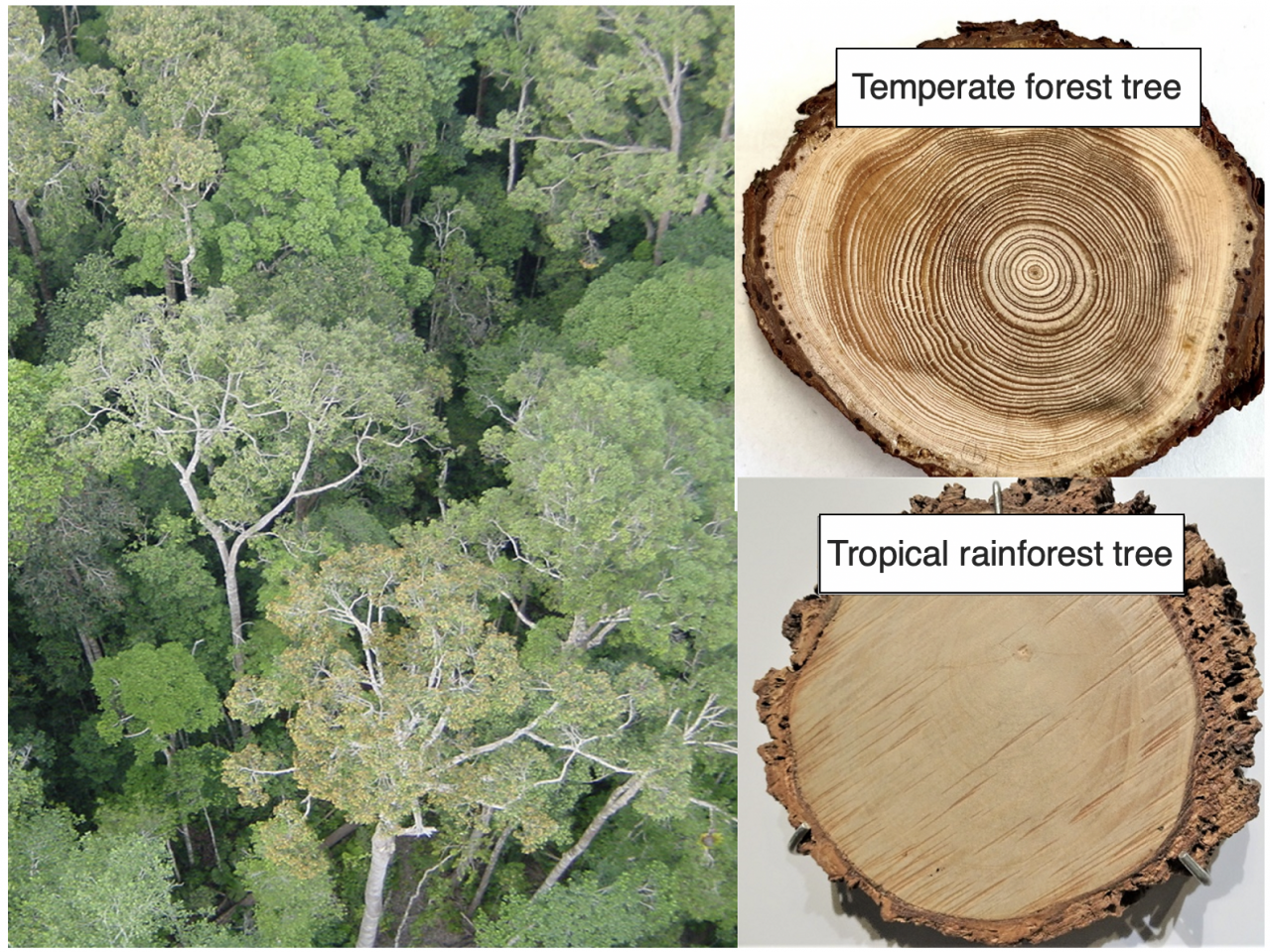Pick Up
503. Altered Growth and Water-use Efficiency of Tropical Rainforest Trees Due to Climate Change Over the Past 50 Years

Global climate change may have a significant impact on the distribution, growth rate, and carbon fixation of the trees that make up forests. Accurate prediction of the effects of climate change is especially important for tropical rainforests, where trees are huge and store large amounts of carbon. Trees in temperate zones, such as Japan, have annual rings that can be used to accurately reproduce changes in growth over the past 100 years or more. These long-term tree growth data provide important clues to the response of trees and forests to climate change. However, in tropical rainforests, where the climate is hot and wet all year round, and there is no seasonality, trees continue to grow throughout the year, so clear annual rings are not possible. Therefore, it has been difficult to determine the long-term growth rate of trees in tropical rainforest areas unless the diameter of each tree is repeatedly measured manually.
In a study published in the international journal Methods in Ecology and Evolution, we used the change in the concentration of radiocarbon isotopes (14C) in the atmosphere over time caused by the Cold War-era atmospheric nuclear testing, and established a new technology to accurately identify past growth from the 14 concentration contained in the wood of Malaysian rainforest trees. We also investigated the degree of air dryness and stomatal opening over the past 50 years based on the fact that the ratio of carbon stable isotopes (13C) contained in the wood is an indicator of how the stomata of the leaves of trees open. The results showed that Malaysia's rainforests have become drier over the past 50 years, with trees closing their stomata and significantly increasing water-use efficiency. The closing of stomata has the effect of reducing water consumption in response to drying and limiting photosynthesis at the same time. As climate change leads to further aridification, rainforest trees will close their stomata more and more, which will reduce their ability to fix carbon through photosynthesis, and there is a risk that the concentration of carbon dioxide in the atmosphere will rise even faster in the future. The results of this study are expected to contribute to the evaluation of the effects of climate change and environmental modification on tropical trees at multiple sites in the future.
The JIRCAS project Evaluation of genetic resources for strengthening productivity and adaptability of tropical forests (Adaptive forestry) is working on breeding tropical tree genetic resources to enhance environmental adaptability, taking climate change into consideration.
Reference
Tomoaki Ichie, Shuichi Igarashi, Ryo Yoshihara, Kanae Takayama, Tanaka Kenzo, Kaoru Niiyama, Nur Hajar Zamah Shari, Fujio Hyodo, Ichiro Tayasu (2022) Verification of the accuracy of the recent 50 years of tree growth and long-term change in intrinsic water-use efficiency using xylem Δ14C and δ13C in trees in an aseasonal tropical rainforest. Methods in Ecology and Evolution.
https://besjournals.onlinelibrary.wiley.com/doi/10.1111/2041-210X.13823
Kochi University website
http://www.kochi-u.ac.jp/information/2022031500012/
Press release (in Japanese)
http://www.kochi-u.ac.jp/information/2022031500012/files/PRESS_20220309…
Picture caption:
In Japan and other regions with seasons, the annual growth rate of trees changes on an annual cycle, so annual rings can be clearly identified and the growth rate can be easily reconstructed (above). In tropical rainforests, on the other hand, the high temperature and high rainfall throughout the year prevents the formation of clear annual rings, making it difficult to determine when the wood was produced (below).
Contributor: TANAKA Kenzo (Forestry Division)
